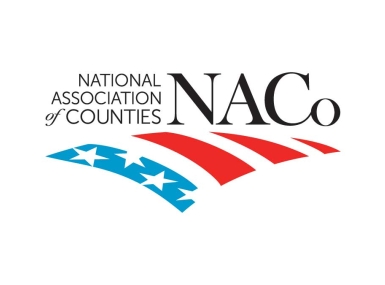Appropriations process moving forward…for now
House struggles with budget process; conservatives balk at spending levels
Analysis
As Congress returns to work after their May recess, pressure is increasing in both chambers to pass a number of appropriations bills, and time is increasingly running short before they adjourn for an early summer recess in July. In recent years, the House and Senate Appropriations Committees have struggled to reach agreements on total spending numbers and pass individual appropriations bills, often resorting to omnibus spending bills that approve spending levels for all federal agencies and programs at once in a large package.
For fiscal year (FY) 2017, however, Congress is hoping a running start will allow both chambers to pass all 12 spending bills and issue a conference report for the first time since FY 2012. The Bipartisan Budget Act of 2015 (P.L. 114-74), signed by President Obama on November 2, 2015, set top line spending levels for FY 2016 and 2017. For FY 2017, the top-line spending level is set at $1.07 trillion, which is $30 billion higher than the initial level set by the Budget Control Act of 2011 (P.L. 112-25).
Senate Progress
While the House of Representatives is charged by the U.S. Constitution with driving the appropriations process, the Senate Appropriations Committee is taking the unusual step of moving ahead of the House on parts of the process this year. To date, the committee has approved four bills, while the House Appropriations Committee has passed just three. House Appropriations Committee Chairman Hal Rogers (R-Ky.) skeptically welcomed the Senate’s progress, reportedly saying he’d “dance a jig on top of the table” if the Senate passed all twelve spending bills.
While the Senate has made progress, there is still a long road ahead, and time is running short ahead of the summer recess (slated to begin July 15). The Energy and Water Appropriations bill was the first to hit the Senate floor and was expected to have smooth sailing. However, it hit an unanticipated speed bump after Democrats strongly opposed an amendment prohibiting the U.S. from purchasing heavy water from Iran (heavy water is water that has a high chemical component that can be used in nuclear reactors). Democratic filibusters forced the Senate to delay two weeks before taking up the bill for a third time last week. After the Iran amendment was defeated on Wednesday, the Senate easily passed the clean appropriations bill on Thursday, 90 to 8. The Senate expects to vote on additional bills in the coming weeks.
House Facing Hurdles
Across the Capitol, the House is struggling just to get the process started. According to House rules, no appropriations bills may be voted on by the full House before May 15 unless the House has agreed to a budget resolution. However, a large contingent of conservative members oppose a FY 2017 budget resolution adhering to the top-line spending levels set in the Bipartisan Budget Control Act last year, and instead would like to see further decreases in federal spending. Delays in the budget process are forcing leadership to consider passing appropriations bills without an overall budget blueprint, a process that would not start until later this week, giving the House even less time than the Senate to pass all twelve spending bills.
County Priorities
The spending bills already passed by the House and Senate Appropriations Committees affect a number of county priorities. The Senate’s Commerce, Justice and Science bill cuts funding for the State Criminal Alien Assistance Program (SCAAP) in half, but boosts spending for the Byrne-JAG Program as well as the Second Chance Act (the Senate bill also cut SCAAP last year, but it was funded in the House bill and ultimately in the final omnibus package). The Senate’s Transportation and Housing and Urban
Development bill maintains level funding for the Community Development Block Grant (CDBG) and the HOME Investment Partnership grants, while boosting spending for the Transit Formula Grants consistent with the FAST Act and increasing spending on federal-aid highways and TIGER grants.
The remaining appropriations bills also contain a number of county priorities we will be watching closely. The Labor, Health and Human Services and Education bill will govern spending levels for the Workforce Innovation Opportunity (WIOA) Act, Community Mental Health Services, Substance Abuse Prevention and Treatment spending, and two block grants essential to local communities: the Social Services Block Grant (SSBG) and the Community Services Block Grant (CSBG). The Interior and Environment bill will also lay out spending levels for the Payments in Lieu of Taxes (PILT) program as well as the Land and Water Conservation Fund. All of the above programs received slight funding increases in FY 2016, and we encourage Congress to maintain that trend.
The Path Ahead
Predictions on a final outcome vary. Leadership in the House and Senate have made it a priority to pass as many regular appropriations bills as possible, which could lead to a smoother omnibus process this summer or at the end of the fiscal year. That said, a number of hurdles remain, including whether and how to fund government responses to issues like disaster assistance for Flint, Michigan or the response to the Zika virus. And, similar to years past, there could potentially be a number of other battles over the President’s executive actions on immigration and environmental policies that could also delay the process. At the very least, Congress is likely to pass a continuing resolution that would continue funding the government at current levels if the appropriations process stalls out entirely.
As Congress returns to work after their May recess, pressure is increasing in both chambers to pass a number of appropriations bills, and time is increasingly running short before they adjourn for an early summer recess in July. In recent years, the House and Senate Appropriations Committees have struggled to reach agreements on total spending numbers and pass individual appropriations bills, often resorting to omnibus spending bills that approve spending levels for all federal agencies and programs at once in a large package.
For fiscal year (FY) 2017, however, Congress is hoping a running start will allow both chambers to pass all 12 spending bills and issue a conference report for the first time since FY 2012. The Bipartisan Budget Act of 2015 (P.L. 114-74), signed by President Obama on November 2, 2015, set top line spending levels for FY 2016 and 2017. For FY 2017, the top-line spending level is set at $1.07 trillion, which is $30 billion higher than the initial level set by the Budget Control Act of 2011 (P.L. 112-25).
Senate Progress
While the House of Representatives is charged by the U.S. Constitution with driving the appropriations process, the Senate Appropriations Committee is taking the unusual step of moving ahead of the House on parts of the process this year. To date, the committee has approved four bills, while the House Appropriations Committee has passed just three. House Appropriations Committee Chairman Hal Rogers (R-Ky.) skeptically welcomed the Senate’s progress, reportedly saying he’d “dance a jig on top of the table” if the Senate passed all twelve spending bills.
While the Senate has made progress, there is still a long road ahead, and time is running short ahead of the summer recess (slated to begin July 15). The Energy and Water Appropriations bill was the first to hit the Senate floor and was expected to have smooth sailing. However, it hit an unanticipated speed bump after Democrats strongly opposed an amendment prohibiting the U.S. from purchasing heavy water from Iran (heavy water is water that has a high chemical component that can be used in nuclear reactors). Democratic filibusters forced the Senate to delay two weeks before taking up the bill for a third time last week. After the Iran amendment was defeated on Wednesday, the Senate easily passed the clean appropriations bill on Thursday, 90 to 8. The Senate expects to vote on additional bills in the coming weeks.
House Facing Hurdles
Across the Capitol, the House is struggling just to get the process started. According to House rules, no appropriations bills may be voted on by the full House before May 15 unless the House has agreed to a budget resolution. However, a large contingent of conservative members oppose a FY 2017 budget resolution adhering to the top-line spending levels set in the Bipartisan Budget Control Act last year, and instead would like to see further decreases in federal spending. Delays in the budget process are forcing leadership to consider passing appropriations bills without an overall budget blueprint, a process that would not start until later this week, giving the House even less time than the Senate to pass all twelve spending bills.
County Priorities
The spending bills already passed by the House and Senate Appropriations Committees affect a number of county priorities. The Senate’s Commerce, Justice and Science bill cuts funding for the State Criminal Alien Assistance Program (SCAAP) in half, but boosts spending for the Byrne-JAG Program as well as the Second Chance Act (the Senate bill also cut SCAAP last year, but it was funded in the House bill and ultimately in the final omnibus package). The Senate’s Transportation and Housing and Urban
The remaining appropriations bills also contain a number of county priorities we will be watching closely. The Labor, Health and Human Services and Education bill will govern spending levels for the Workforce Innovation Opportunity (WIOA) Act, Community Mental Health Services, Substance Abuse Prevention and Treatment spending, and two block grants essential to local communities: the Social Services Block Grant (SSBG) and the Community Services Block Grant (CSBG). The Interior and Environment bill will also lay out spending levels for the Payments in Lieu of Taxes (PILT) program as well as the Land and Water Conservation Fund. All of the above programs received slight funding increases in FY 2016, and we encourage Congress to maintain that trend.
The Path Ahead
Predictions on a final outcome vary. Leadership in the House and Senate have made it a priority to pass as many regular appropriations bills as possible, which could lead to a smoother omnibus process this summer or at the end of the fiscal year. That said, a number of hurdles remain, including whether and how to fund government responses to issues like disaster assistance for Flint, Michigan or the response to the Zika virus. And, similar to years past, there could potentially be a number of other battles over the President’s executive actions on immigration and environmental policies that could also delay the process. At the very least, Congress is likely to pass a continuing resolution that would continue funding the government at current levels if the appropriations process stalls out entirely.
Attachments
Related News

County Countdown – Dec. 1, 2025
Every other week, NACo's County Countdown reviews top federal policy advocacy items with an eye towards counties and the intergovernmental partnership.

Counties Celebrate Key Permitting Inclusions in SPEED Act
NACo issued the following statement in response to the passage of the Standardizing Permitting and Expediting Economic Development (SPEED) Act (H.R. 4776), which advanced out of the U.S. House Committee on Natural Resources on November 20.

Federal district court issues ruling preventing the federal government from imposing immigration compliance mandates on grant recipients
On November 4, a federal judge in Rhode Island ruled that the U.S. Department of Transportation cannot condition federal grant funding on a recipient’s cooperation with federal immigration enforcement efforts.
